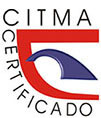Evolution of tenure and ownership of land in Cuba
Keywords:
land tenure, land ownership, Cuba, land grantsAbstract
Introduction: The Cuban economy, and especially that of Santa Clara, during the 17th y 18th centuries, cannot be seen as unrelated to the process of land grants given with the beginning of Hispanic colonization.
Methods: It has a theoretical-conceptual base supported by the theory and method of regional and local history. Based on this, they use the historical-logical, analytical-synthetic, inductive-deductive, analogical-comparative methods and the analysis of documents.
Results: With the conquest of Cuban territory, Diego Velázquez applied the model of permanence in the place of the Spanish, who for this reason acquired the status of neighbor. The lands were granted in two different ways: lots and farmland. All land that belonged to the Indians, to the cities or to individuals is declared as public property or land of the King (realengas).
Conclusions: Taking into account those analyzed and based on the Cuban case, four fundamental phases are defined for the formation of the communal property.
Downloads
References
BARCIA, M.C. (2007). Historia de Cuba. La Colonia. Evolución socioeconómica y formación nacional desde los orígenes hasta 1867. La Habana: Editorial Félix Varela, Primera Parte.
CELORIO, B. (1914). Haciendas Comuneras. La Habana: Imprenta y Papelería de Rambla, Bonza y Cia.
EDELMAN, M. (1998). La lógica del latifundio: las grandes propiedades al noreste de Costa Rica desde fines del siglo XIX. Costa Rica: Editorial de la universidad de Costa Rica.
GONZÁLEZ, M. D. (1858). Memorias Históricas de la Villa de Santa Clara y su jurisdicción. Villa Clara: Imprenta del Siglo.
GUERRA, R. (1938). Manual de Historia de Cuba (económica, social y política). La Habana: Cultural, S.A.
IBARRA CUESTA, J. (2008). Marx y los historiadores ante la hacienda y la plantación esclavista. La Habana: Editorial de Ciencias Sociales.
KAY, C. (2000). Latin American´s Agrarian Transformation: Peasantization and Proletarianization. En Disappearing Peasantries? Rural Labour in África, Asia and Latin America, 123-128. Londres: ITDG Publishing.
KAY, C. (2008). Pobreza rural y desarrollo en Honduras, Nicaragua y Bolivia. La Haya: Intitute of Social Studies.
KAY, C. (2009). Estudios rurales en América Latina en el prriodo de globalización neoliberal: ¿una nueva ruralidad? Revista Mexicana de Sociología 71 (4).
KEITH, R. (1970). La hacienda, la comunidad y el campesinado en el Perú. Lima: Moncloa-Campodónico.
KEITH, R. (1977). Haciendas and Plantations in Latin American History. New York: Holmes & Meier.
LE RIVEREND, J. (1971) Historia Económica de Cuba. La Habana: Editorial Pueblo y Educación.
LE RIVEREND, J. (1974). Vecindades y Estancias. En los albores de la organización agraria en Cuba. La Habana: Edición Revolucionaria.
MARX, K. (1978). El Capital: Crítica de la Economía Política. México D. F.: Editorial Fondo de Cultura Económica.
PICHARDO, H. (1977). Documentos para la historia de Cuba. Cuarta edición. La Habana: Editorial de Ciencias Sociales.
PORTUONDO, F. (1965) Historia de Cuba. La Habana: Editorial del Consejo Nacional de Universidades.
WEBER, M. (1947). The Theory of Social and Economic Organization. New York: The Free Press.
WEBER, M. (1966). Economía y sociedad. La Habana: Editorial de Ciencias Sociales.
WEBER, M. (1966). Historia Económica General. La Habana: Editorial de Ciencias Sociales.
WOLF, E. R., & MINTZ, S. W. (1957). Haciendas and plantations in Middle America and the Antilles. Social and Economic Studies, 6: 380-412.
Downloads
Published
How to Cite
Issue
Section
License
Copyright (c) 2023 María Karla García Campos, Eraida Campos Maura

This work is licensed under a Creative Commons Attribution-NonCommercial 4.0 International License.
Usted es libre de:
Compartir — copiar y redistribuir el material en cualquier medio o formato
Adaptar — remezclar, transformar y construir a partir del material
La licenciante no puede revocar estas libertades en tanto usted siga los términos de la licencia
Bajo los siguientes términos:
Usted es libre de:
Atribución — Usted debe dar crédito de manera adecuada, brindar un enlace a la licencia, e indicar si se han realizado cambios. Puede hacerlo en cualquier forma razonable, pero no de forma tal que sugiera que usted o su uso tienen el apoyo de la licenciante.
NoComercial — Usted no puede hacer uso del material con propósitos comerciales.
No hay restricciones adicionales — No puede aplicar términos legales ni medidas tecnológicas que restrinjan legalmente a otras a hacer cualquier uso permitido por la licencia.


















